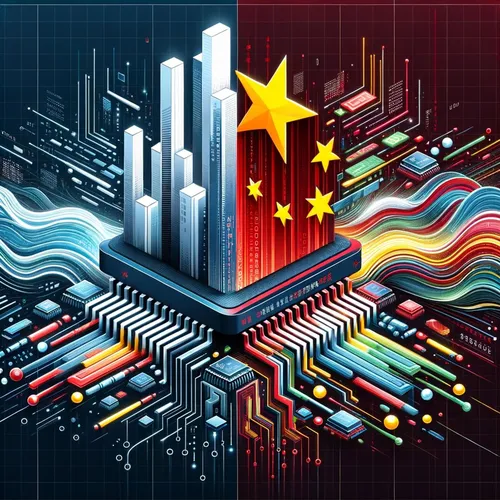Beijing's Hacker Havoc: Tariff Tango, Chip Chaos & AI Antics
- Author
- Quiet. Please
- Published
- Fri 29 Aug 2025
- Episode Link
- https://www.spreaker.com/episode/beijing-s-hacker-havoc-tariff-tango-chip-chaos-ai-antics--67556414
This is your Beijing Bytes: US-China Tech War Updates podcast.
Ting here, and if you thought US-China tech drama was slowing down, buckle up—because the last two weeks have been pure cyber-chaos and trade intrigue at speeds that would make a TikTok trend look sluggish.
First up, cybersecurity. Let’s talk Salt Typhoon, the hacking group that’s got every US agency on red alert. According to Michael Machtinger at the FBI, Salt Typhoon, linked right back to Beijing, managed to infiltrate data belonging to millions of Americans through telecom networks. We’re not just talking your garden-variety hacks here. The campaign went global—over 80 countries hit—with at least 200 major American organizations compromised. Victims ranged from telcos like Verizon and AT&T all the way up to household political names. What’s more, Beijing’s reliance on domestic tech firms like Sichuan Juxinhe Network Technology has backfired, as pointed out by another FBI executive: the fragmented control and lack of oversight in these companies gave US cyber-defenders breadcrumbs straight back to the source. But even with this exposure, China’s hacker-for-hire model remains reckless and, let’s face it, absolutely massive in scale.
Switching from code to chips: The US just yanked the special permissions that allowed Samsung and SK Hynix to buy American chipmaking gear for their China factories. These carve-outs were a Band-Aid dating back to 2022, but now, anyone wanting advanced US tools in China needs a license. Commerce says existing Chinese factories will keep running, but forget about expanding or importing state-of-the-art tech. US suppliers like Lam Research and Applied Materials felt the sting immediately with stock slumps. For chip geeks, this means slower Chinese access to advanced hardware—but ironically, it also hands a juicy opportunity to local Chinese equipment makers and even US rivals like Micron.
Tariffs? Oh yes, those are back in the spotlight. The US and China did a surprise 90-day truce in May, slashing tariffs to boost trade just as summer was heating up. For now, US rates on Chinese imports hover at 34%, but with most of that suspended, the effective rate for gadgets like laptops and GPUs is just 10%. China reciprocated, dropping its curtain of tariffs on American soybeans and machinery. But this is temporary; November brings the uncertainty back. The Office of the US Trade Representative just extended exemption on China-made GPUs and motherboards to late November—much to the relief of both gamers and PC industry execs dreading a price hike disaster.
On the Chinese side, Huawei’s senior exec Tao Jingwen just pulled off a victory lap, declaring that Huawei has built a computing and AI ecosystem fully independent of US tech. Their CloudMatrix 384 system—a monster cluster delivering 300 petaflops—just came online, challenging US dominance in datacenter power. Tao even claimed China is positioned to surpass the US in AI application, riding on homegrown hardware and the country’s massive business base.
Meanwhile, Beijing’s regulators are busy minding the AI gold rush, warning provinces to avoid “disorderly competition.” The National Development and Reform Commission wants a coordinated boom, not a bubble, and is urging local governments to play to their unique strengths. It’s all about steering investment smartly and nurturing real innovation, not just throwing funds at every AI startup that shouts “GPT” loud enough.
Industry impact? US chip and cloud firms are evaluating exits, Chinese tech companies are on the rise but still worried about component supply restrictions, and global supply chains are one policy tweet away from gridlock. Experts like those from Bloomberg and SCMP say the next six months will be all about resilience, decoupling, and a battle of national champions—think Huawei vs. Nvidia, with regulators refereeing in between.
Forecast:...
